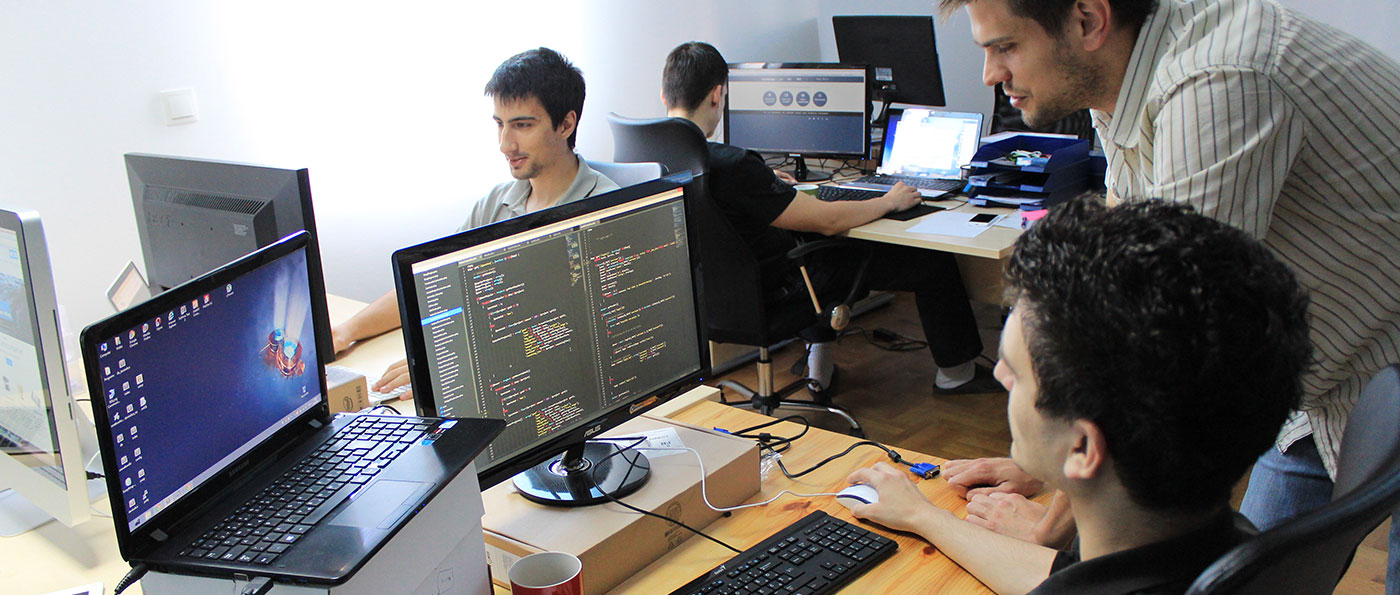Web applications have become an integral part of our digital lives, enabling businesses to offer their services and engage with users online. Whether it’s an e-commerce platform, a social networking site, or a productivity tool, web app development plays a crucial role in bringing these applications to life. However, one common question that arises is, “How much does it cost to develop a web app, and what does the price depend on?” In this article, we will delve into the factors that influence the cost of web app development, understanding the cost breakdown, various pricing models, average cost ranges, and tips to optimize development costs.
Introduction
In today’s digital landscape, web applications are at the forefront of technological advancements. They provide businesses with the opportunity to expand their reach, enhance customer experiences, and streamline operations. But before diving into the cost aspects, let’s first understand what web application development entails.
Web application development refers to the process of creating dynamic websites or online platforms that offer interactive functionalities to users. It involves designing and programming the frontend user interface, implementing backend functionalities, integrating databases, and ensuring seamless performance. Web app development requires a blend of technical expertise, design skills, and a deep understanding of user requirements.
Factors Influencing the Cost of Web App Development
Several factors come into play when determining the cost of web app development. These factors not only affect the complexity of the project but also influence the resources, time, and effort required to bring the application to life. Here are the key factors that impact the cost:

Complexity of the Web Application
The complexity of the web application is one of the primary factors that affect the development cost. A simple web application with basic functionalities, such as a static website or a basic blog, will have a lower cost compared to a complex e-commerce platform or a social networking site. The number of features, interactions, and integrations required will determine the complexity and subsequently the cost.
Design and User Interface Considerations
The design and user interface (UI) of a web application play a crucial role in attracting and engaging users. A well-designed and intuitive UI enhances the user experience, leading to higher user satisfaction and retention. The complexity and intricacy of the design, including custom animations, transitions, and responsive layouts, can influence the development cost.
Integration of Third-Party Services and APIs
Web applications often require integration with various third-party services and APIs to provide additional functionalities. These can include payment gateways, mapping services, social media integration, email services, and more. The complexity of integrating these services, ensuring seamless communication, and handling data exchange can impact the development cost.

Backend Infrastructure Requirements
The backend infrastructure of a web application involves database management, server configuration, and application logic implementation. The choice of the technology stack, scalability requirements, and the need for robust data storage and retrieval mechanisms can influence the development cost.
Security Measures and Data Protection
Web applications deal with sensitive user data, making security a crucial aspect of development. Implementing robust security measures, such as encryption, secure authentication, and data privacy compliance, can add to the development cost.
Mobile Responsiveness and Cross-Platform Compatibility
In today’s mobile-centric world, web applications must be responsive and compatible with various devices and screen sizes. Developing a web app that adapts seamlessly to different platforms, browsers, and devices requires additional effort and can impact the development cost.
Testing and Quality Assurance Processes
Thorough testing and quality assurance (QA) are vital to ensure the functionality, performance, and usability of a web application. Rigorous testing for bugs, compatibility, performance optimization, and user acceptance testing requires time and effort, adding to the development cost.
Ongoing Maintenance and Support
Once the web application is developed and deployed, ongoing maintenance and support are essential to address any issues, apply updates, and ensure smooth operations. These costs should be considered for the long-term sustainability of the web application.
Understanding the Cost Breakdown
Now that we have explored the key factors that influence the cost of web app development, let’s dive into the cost breakdown to get a better understanding of where the expenses come from.

Hourly rates of web developers and designers
Web development agencies and freelancers typically charge hourly rates for their services. The rates can vary depending on the location, experience, and expertise of the developers and designers involved in the project.
Number of hours required for each development stage
Web app development involves various stages, including project planning, design, frontend and backend development, testing, deployment, and ongoing maintenance. The number of hours required for each stage depends on the complexity of the web application and the efficiency of the development team.
Additional costs for specialized features or functionalities
If the web application requires specialized features or functionalities, such as real-time notifications, advanced search capabilities, or custom integrations, additional costs may be incurred for developing or integrating these elements.
Expenses for hosting, domain, and SSL certificates
Web applications need a hosting service to make them accessible on the internet. Domain registration and SSL certificates are also essential for securing the web application. These expenses should be considered when calculating the overall cost.
Marketing and promotion expenses
After the web application is developed, marketing and promotion efforts are necessary to attract users and drive traffic to the platform. Expenses related to digital marketing campaigns, search engine optimization (SEO), social media marketing, and content creation should be factored into the overall cost.
Types of Web App Development Pricing Models
When it comes to pricing models for web app development, there are several options available. Each model has its advantages and considerations, depending on the specific project requirements and budget. Let’s explore the three most common pricing models:
Fixed Price Model
In the fixed price model, the development cost is agreed upon upfront based on the project scope and requirements. This model is suitable for small to medium-sized projects with well-defined specifications and limited changes expected during the development process. It provides clarity on the cost from the beginning, making it easier to plan the budget.
Time and Materials Model
The time and materials model time and resources invested in the development process. The cost is calculated based on the number of hours spent by developers, designers, and other team members, along with the materials and resources used. This model offers flexibility for evolving requirements and allows for more iterations and improvements throughout the development cycle.
Dedicated Development Team Model
In the dedicated development team model, a development team is allocated exclusively to the project. The team works closely with the client, providing continuous support and flexibility for changes and additions. This model is suitable for large-scale projects with complex requirements and longer development timelines.
Average Cost Ranges for Web App Development
The cost of web app development can vary significantly based on the factors mentioned earlier. However, to provide a general idea, let’s explore the average cost ranges for different types of web applications:
Basic Web Application
A basic web application with standard features and functionalities, such as a static website or a simple blog, can cost between $5,000 and $20,000. The actual cost may vary depending on the complexity of the design, UI requirements, and customization needs.
Mid-Range Web Application
A mid-range web application with more advanced features and customizations, such as an e-commerce platform or a content management system (CMS), can range from $20,000 to $100,000 or more. The cost will depend on factors like the number of integrations, the complexity of the backend, and UI/UX requirements.
Complex Enterprise-Level Web Application
Complex enterprise-level web applications with extensive functionalities, scalability requirements, and integrations with multiple systems can cost upwards of $100,000. The cost can go into hundreds of thousands or even millions of dollars, depending on the complexity and scale of the project.
It’s important to note that these cost ranges are approximate and can vary based on various factors specific to each project. It’s advisable to consult with experienced web development professionals to get accurate cost estimates based on your specific requirements.
Tips to Optimize Web App Development Costs
While web app development costs can be significant, there are ways to optimize and manage expenses without compromising the quality and functionality of the application. Consider the following tips:
Prioritize Features and Functionalities
Identify and prioritize the must-have features and functionalities for your web application. This will help you focus on the essential elements and avoid unnecessary expenses on non-essential features.
Use Open-Source Frameworks and Libraries
Leverage open-source frameworks and libraries to speed up development and reduce costs. These frameworks often provide pre-built modules and functionalities, saving development time and effort.
Opt for Scalable Architecture
Choose a scalable architecture for your web application that can accommodate future growth and evolving requirements. Scalable architecture allows you to add new features and functionalities without requiring a complete overhaul of the system, reducing long-term costs.
Collaborate Closely with the Development Team
Maintain clear communication and collaboration with the development team throughout the project. Regular feedback, discussions, and timely decision-making can avoid costly rework and ensure efficient development.
Conduct Thorough Testing and Bug Fixing
Invest in comprehensive testing and bug fixing to identify and resolve issues early in the development process. This can prevent costly fixes and updates after the application is deployed.
Conclusion
Developing a web application involves various factors that influence the overall cost. The complexity of the application, design considerations, integration of third-party services, backend infrastructure requirements, security measures, and ongoing maintenance all contribute to the final cost. Understanding the cost breakdown, exploring different pricing models, and optimizing development costs through prioritization, open-source utilization, scalable architecture, collaboration, and thorough testing can help manage expenses effectively.
FAQs
Q. How long does it take to develop a web app?
The development timeline for a web app depends on its complexity, scope, and requirements. A simple web app may take a few weeks, while a complex enterprise-level application can take several months or even longer.
Q. Can I make changes to the web app after it’s developed?
Yes, changes and updates can be made to a web app even after it’s developed. However, it’s advisable to discuss the potential for changes and their impact on the development process and cost with the development team.
Q. What ongoing costs should I consider for web app maintenance?
Ongoing maintenance costs for a web app may include hosting fees, domain renewal, SSL certificate updates, regular backups, security monitoring, bug fixes, and updates to keep the application secure and up to date.
Q. Do I need a mobile app in addition to a web app?
The need for a mobile app alongside a web app depends on your target audience and business requirements. If your target audience primarily uses mobile devices or if your app requires device-specific features, a mobile app may be beneficial. It’s best to analyze your target market and consult with experts to determine the most suitable approach.
Q. Can I hire freelance developers for web app development?
Yes, hiring freelance developers for web app development is a common practice. Freelancers can provide expertise and cost-effective solutions, but ensuring they have the necessary skills, experience, and a proven track record in web app development is crucial.
